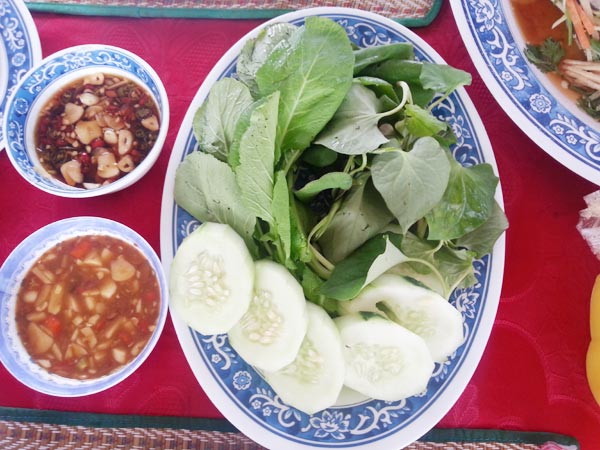City of good karma
Updated: 2013-12-22 13:38
By Wu Liping (China Daily)
|
||||||||
 |
|
Fresh herbs are popular on local tables. |
"A young man in Laos will become a monk at least once in his life," says Khammuong Oudomhak, head of the office at the Laos Journalists Association, and our guide.
"Some may devote their whole lives to Buddhism, but most choose to be a monk for years or just for several days. In Laos, the main aim of becoming a monk is to give thanks to mothers."
|
 |
Oudomhak tells us he had been a monk for 17 years.
"I became a monk under my mother's wish," he says. "When I grew older, I felt the goodness and calm that come from Buddhism."
Although Oudomhak, 64, has resumed secular life for nearly 40 years, he says he has benefited from the experience.
"It taught me the beauty of a simple life," he says. "Laotian people treat guests warmly and hope they can be as happy as we are."
In Luang Prabang, the religious and the secular live together harmoniously, which we can sense from the layout of the city. On some streets, temples are constructed all along one side of the street, while ordinary houses are on the opposite side of the road.
The doors of the temples are always open, inviting all to share the merits of sutra-chanting. The walls of the temples are shorter than shoulder height, all the better for passers-by to look in at the monks and how they live.
Among the temples in Luang Prabang, Wat Xieng Thong, or The Temple of the Golden City, is regarded as the most beautiful temple in Laos. It was built in 1560.
Another interesting building is the Luang Prabang National Museum, built upon the old royal palace buildings that were constructed between 1904 and 1909.
The throne room of the palace is decorated with colorful mosaics on the red wall, depicting Laotian folk tales, customs, ceremonies and wars. In the king's reception room, visitors can enjoy the murals recording the daily lives of ordinary Lao people. There is also the king's old study, as well as all the bedrooms for the royal household, all decorated with traditional furniture, portraits, costumes, household goods and other artifacts that were used by the imperial family.

 Post-baby Duchess
Post-baby Duchess
 Victoria Beckham S/S 2014 presented during NYFW
Victoria Beckham S/S 2014 presented during NYFW
 'Despicable' minions upset Depp's 'Lone Ranger' at box office
'Despicable' minions upset Depp's 'Lone Ranger' at box office
 'Taken 2' grabs movie box office crown
'Taken 2' grabs movie box office crown
 Rihanna's 'Diamonds' tops UK pop chart
Rihanna's 'Diamonds' tops UK pop chart
 Fans get look at vintage Rolling Stones
Fans get look at vintage Rolling Stones
 Celebrities attend Power of Women event
Celebrities attend Power of Women event
 Ang Lee breaks 'every rule' to make unlikely new Life of Pi film
Ang Lee breaks 'every rule' to make unlikely new Life of Pi film
Most Viewed
Editor's Picks

|

|

|

|

|

|
Today's Top News
Student wounded in school shooting dies
US aircraft hit by gunfire in South Sudan
Memorials mark Lockerbie attack
China's moon rover works stably
H5N2 outbreaks in northern province
Freed Russian oil tycoon lands in Germany
US needs check data gathering
India transfers diplomat to UN
US Weekly

|

|








